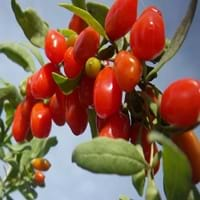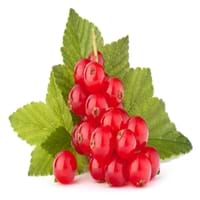Health Benefits
Anti-oxidant properties, Eye care, Helps in cartilage regeneration, Regulates Blood Sugar, Treatment of osteoarthritis
Cancer prevention, Gout treatment, Heart care, Regulation of heart rate, Treatment of rheumatism
General Benefits
Boosts immune system, Digestive aid
Anti oxidant properties, Controls blood pressure, Cures fever, Digestive aid, Healing of wounds, Helps in weight loss, Strengthens bones
Skin Benefits
Anti-aging benefits, Reduces wrinkles, Treatment of skin diseases
Brightens and lightens complexion, Reduces wrinkles, Treatment of acne
Hair Benefits
Protects hair, Regulates hair growth
Protects hair
Allergy Symptoms
Anaphylaxis, Itching, Sneezing, Wheezing
Abnormally rapid heart rate, Anaphylaxis, Breathing difficulty, Hives, Itching, Swallowing difficulties
Side Effects
May interact with some drugs
Possibly unsafe during pregnancy
Best Time to Eat
Any time except an hour after meal, Don't consume at night and before bed
Best if taken as a breakfast (or empty stomach), As a snack in the late afternoon, Don't eat after meal, Morning time (before lunch)
Vitamin B5 (Pantothenic Acid)
Vitamin C (Ascorbic Acid)
Vitamin K (Phyllochinone)
Phytosterol
Not Available
Calories in Fresh Fruit with Peel
Calories in Fresh Fruit without Peel
Not Available
Not Available
Calories in Frozen Form
Not Available
Calories in Canned Form
Not Available
Not Available
Varieties
No Types
Rovada, Stanza, Red Lake, Junifer and Jonkheer van Tets
Taste
Slightly bitter, Tart
Sour, Tart
Soil Type
Well-drained
Moist, Well-drained
Climatic Conditions
Cold, Hot
Cold
Facts about
- Study says a man named Li Qing Yuen used to eat goji berries daily and lived for 252 years.
- They are also known as wolfberries in India & China.
- This fruit is used for spiritual purposes at many places.
- The albino version of red currants known as white currants, are often sold as different fruit.
- Red currant tea is healthy substitute for coffee.
- There are more than 150 varieties of red currants.
Top Producer
China
Russia
Other Countries
Canada, France, India, United States of America
Belgium, France, Germany, Ireland, Italy, Netherlands, Poland, Portugal, Scotland, Spain, Sweden, United Kingdom
Top Importer
United States of America
Germany
Top Exporter
China
Russia
Botanical Name
Lycium barbarum
Ribes rubrum
Synonym
Wolfberry
Not Available
Subkingdom
Tracheobionta
Tracheobionta
Division
Unknown
Magnoliophyta
Class
Unknown
Magnoliopsida
Subclass
Asteridae
Rosidae
Order
Solanales
Saxifragales
Family
Solanaceae
Grossulariaceae
Species
L. barbarum
R. rubrum
Generic Group
Not Available
Saxifrage
Difference Between Gojiberry and Red Currant
We might think that Gojiberry and Red Currant are similar with respect to nutritional value and health benefits. But the nutrient content of both fruits is different. Gojiberry and Red Currant Facts such as their taste, shape, color, and size are also distinct. The difference between Gojiberry and Red Currant is explained here.
The amount of calories in 100 gm of fresh Gojiberry and Red Currant with peel is 32.00 kcal and 56.00 kcal and the amount of calories without peel is Not Available and Not Available respectively. Thus, Gojiberry and Red Currant belong to Low Calorie Fruits and Low Calorie Fruits category.These fruits might or might not differ with respect to their scientific classification. The order of Gojiberry and Red Currant is Solanales and Saxifragales respectively. Gojiberry belongs to Solanaceae family and Red Currant belongs to Grossulariaceae family. Gojiberry belongs to Lycium genus of L. barbarum species and Red Currant belongs to Ribes genus of R. rubrum species. Beings plants, both fruits belong to Plantae Kingdom.









